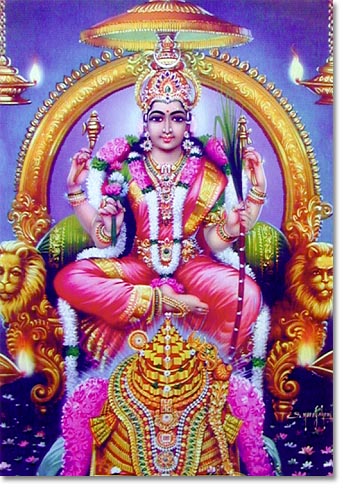

The final division is the blissful state that the mind achieves, when it is in total unification with the supreme.Para vidya alone can show us the path to eternal bliss. The attainment of this integral consciousness is the flowering of our spiritual evolution through which we realize true oneness with the soul and the supreme reality. Through the integration of all aspects of our multifaceted existence, we give birth to one, single state of consciousness. Integral consciousness signifies this state of internal harmony.

In our journey towards the realization of oneness, we must merge our human personality with our eternal essence and attain inner wholeness. Integral consciousness is another name for the unification of the mind with the inner state and the ego with the soul which is the second division of the mantra. The capacity to sublimate and direct hostile energy into constructive outlets. The capacity to relate to others in a kind, consistent manner. The capacity to find more satisfaction in giving than receiving. The ability to deal constructively with reality and delay gratification.įreedom from symptoms produced by tension and anxiety. We often get lead by the fact that living our lives and attaining enlightment is only through meditation and chanting of mantras but there is a different dimension which we have to conquer to attain the state of nirvana or bliss.That includes : Subjective consciousness is one division of the root mantra and it is the understanding of the enviornment and its requirement. So to understand why it is compared with her body we have to understand she is the embodiment of creation,protection and destruction and what is the meta physical aspect of it. The combination of three powers makes up AUM and this combination embodies God with creative, sustaining and destructive powers. For example, a (pronounced “ah”) represents our waking state, which is also the subjective consciousness of the outer world u (pronounced “ooh”) is the dreaming state, or the consciousness of our inner world of thoughts, dreams, memories, and so on and m is the dreamless state of deep sleep and the experience of ultimate unity.This is interpreted as A stand for Brahma, U for Vishnu and M for Shiva. (In Sanskrit, whenever an initial a is followed by a u, they coalesce into a long o sound.) Each of these three parts has numerous metaphysical associations, which themselves serve as meditative seeds. Though commonly spelled om, the mantra actually consists of three letters, a, u, and m. Yogis often meditate on the four “measures,” or parts, of om. In a commentary on the Yoga Sutra, the ancient sage Vyasa noted that through chanting om, “the supreme soul is revealed.” In a similar vein, Tibetan scholar Lama Govinda wrote that om expresses and leads to the “experience of the infinite within us.” Thus, chanting om may be the easiest way to touch the Divine within your very self. Patanjali–who wrote the Yoga Sutra and is considered to be the father of classical yoga–taught that when we chant this sacred syllable and simultaneously contemplate the meaning of it, our consciousness becomes “one-pointed: and prepared for meditation. According to the Katha Upanishad (2.15), om is the “word which all the Vedas rehearse.”Īs such, om is the meditative seed par excellence.

Om is the “primordial seed” of the universe–this whole world, says one ancient text, “is nothing but om.” It is also considered to be the root mantra from which all other mantras emerge and to encapsulate the essence of the many thousands of verses of Hinduism’s holiest texts, the Vedas.

Om is frequently called the pranava, literally “humming,” a word that derives from pranu, “to reverberate,” and ultimately from the root nu, “to praise or command” but also “to sound or shout.” It is the audible expression of the transcendental, attributeless ground of reality. One of the oldest and most widely known of these seeds is om. It’s believed that, just as a tiny seed contains a majestic tree, each bija contains vast amounts of spiritual wisdom and creative force. Single-syllable mantras, known as bija (seed) mantras, are the easiest to remember and recite they’re also the most powerful. They can be composed of sentences, single words, or even single syllables they can be perfectly intelligible or completely mystifying (at least to the uninitiated). Mantras, sacred chants, come in all shapes and sizes.


 0 kommentar(er)
0 kommentar(er)
